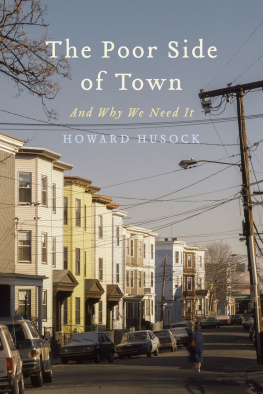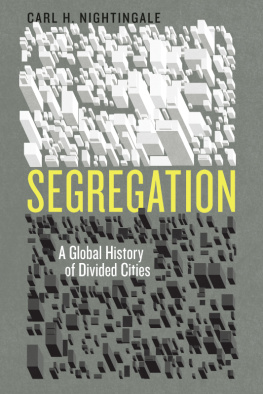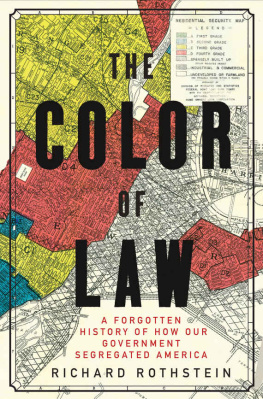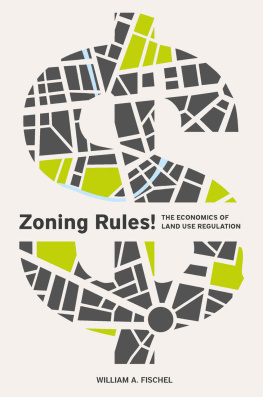About Island Press
Since 1984, the nonprofit organization Island Press has been stimulating, shaping, and communicating ideas that are essential for solving environmental problems worldwide. With more than 1,000 titles in print and some 30 new releases each year, we are the nations leading publisher on environmental issues. We identify innovative thinkers and emerging trends in the environmental field. We work with world-renowned experts and authors to develop cross-disciplinary solutions to environmental challenges.
Island Press designs and executes educational campaigns, in conjunction with our authors, to communicate their critical messages in print, in person, and online using the latest technologies, innovative programs, and the media. Our goal is to reach targeted audiencesscientists, policy makers, environmental advocates, urban planners, the media, and concerned citizenswith information that can be used to create the framework for long-term ecological health and human well-being.
Island Press gratefully acknowledges major support from The Bobolink Foundation, Caldera Foundation, The Curtis and Edith Munson Foundation, The Forrest C. and Frances H. Lattner Foundation, The JPB Foundation, The Kresge Foundation, The Summit Charitable Foundation, Inc., and many other generous organizations and individuals.
The opinions expressed in this book are those of the author(s) and do not necessarily reflect the views of our supporters.

Island Presss mission is to provide the best ideas and information to those seeking to understand and protect the environment and create solutions to its complex problems. Click here to get our newsletter for the latest news on authors, events, and free book giveaways.
2022 M. Nolan Gray
All rights reserved under International and Pan-American Copyright Conventions. No part of this book may be reproduced in any form or by any means without permission in writing from the publisher: Island Press, 2000 M Street, NW, Suite 480-B, Washington, DC 20036-3319.
Library of Congress Control Number: 2021951324
All Island Press books are printed on environmentally responsible materials.
Manufactured in the United States of America
10 9 8 7 6 5 4 3 2 1
Keywords: accessory dwelling unit (ADU); affordable housing; automobile dependency; commercial use; deed restriction; density; Houston, Texas; industrial use; land use regulation; minimum lot size; parking requirement; residential use; segregation; sprawl; sustainability; Yes In My Backyard (YIMBY)
ISBN-13: 978-1-64283-255-6 (electronic)
For Mom and Dad
who moved to a city and
made it all possible.
Introduction
As Americans, we take comfort in the idea that we have the right to plan our own lives. We are unique in our confidence that it is within our power to move to a better life, as so many of our ancestors did. Where other countries talk about managing stagnation and even decline, we stand undaunted in our assurance that the limits of our wealth and the frontier of innovation lay well into the future. Liberated from Old World hierarchies, we Americans fancy our home a place where any person, regardless of their color, creed, or class background, can improve their lot. And if there are broader forces that threaten our way of life, so much the worse for them; progress, and the change it brings, is intrinsic to who we are.
The idea that a stodgy rule book could set the terms of our lives from on high is fundamentally at odds with our national ethos. And yet, such is the state of America under zoning. From unremarkable origins, the arbitrary lines on zoning maps across the country have come to dictate where Americans may live and work, forcing cities into a pattern of growth that is segregated and sprawling. Once the exclusive domain of local planners, concurrent crises surrounding housing costs,underwhelming economic growth, racial and economic inequality, and climate change have thrust zoning into the public consciousness. Now more than ever, there is an appetite for reform. Yet we can do better: its time for America to move beyond zoning.
At surface level, zoning is an impossibly boring topic, even by the terms of public policy debate. The mere thought of a weeknight zoning hearing or a seven-hundred-page zoning ordinance is enough to make even the most enthusiastic policy wonks eyes glaze over. Until recently, zoning might have been blithely dismissed as a mere technical matter, simply a way of rationalizing our cities, a planning policy so obvious as to be beyond reproach.
But zoning is at once so much less and so much more. While occasionally used as a stand-in for city planning or building regulations more broadly, its scope is far more limited: at a basic level, all zoning does is segregate land uses and regulate densities. Your local zoning ordinance sets out various districts, each with detailed land-use and density rules, while an associated local zoning map establishes where these rules apply. The bread and butter of what most people think of as city planningsuch as streets planning or building regulationshas almost nothing to do with zoning.
Yet from these seemingly innocuous zoning rules have emerged a set of endlessly detailed parameters controlling virtually every facet of American life. Arbitrary lines on zoning maps determine where you can live, by way of allowing housing to be built here but not there. Through a dizzying array of confusing and pseudoscientific rules, from floor area ratio restrictions to setback mandates, zoning serves to heavily restrict the amount of housing that may be built in any given neighborhood and the form it may take. In most major cities, zoning restricts roughly three-quarters of the city to low-slung single-family housing, banning apartments altogether.
The combined effect is that, in already built-out cities, zoning makes it prohibitively difficult to build more housing. As a result of the further tightening of zoning restrictions beginning in the 1970s, median housing prices have dramatically outpaced median incomes in many parts of the country over the past half century, such that millions of Americans now struggle to make rent or pay their mortgage each month. That is, if they have the luxury of having a stable home at all: in places where demand for new housing is especially highas in cities like New York and Los Angeleszoning restrictions have facilitated acute housing shortages, with attendant surges in displacement and homelessness. The COVID-19 pandemic has only expedited these trends, with home prices in 2020 rising at the fastest rate since 1979.
The arbitrary restrictions that zoning places on cities also show up in our capacity to grow and innovate as a nation. By severely limiting new housing production in a handful of our most productive citiesincluding San Jose and Bostonwe have made moving to our most prosperous regions a dubious proposition. Your income might double if you were to move from Orlando to San Francisco, but your housing costs would quadruple. Should we be surprised that many people are turning down that deal? For the first time in history, Americans are systematically moving from high-productivity cities to low-productivity cities, in no small part because these are the only places where zoning allows housing to be built. According to the 2020 Census, the population of Californiaone of our most productive and innovative statesis now basically stagnant, such that the Golden State will be losing a congressional seat for the first time in its 170-year history.










